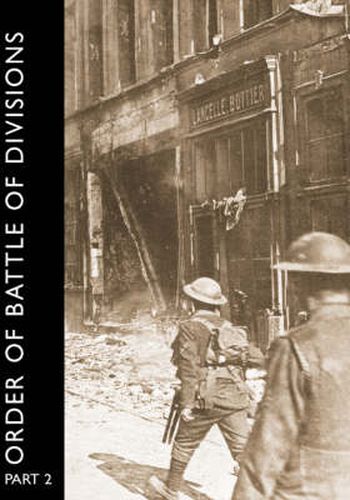Readings Newsletter
Become a Readings Member to make your shopping experience even easier.
Sign in or sign up for free!
You’re not far away from qualifying for FREE standard shipping within Australia
You’ve qualified for FREE standard shipping within Australia
The cart is loading…






The Rifle Brigade was formed in 1800 by detachments from various regiments as the ‘Experimental Corps of Riflemen’ initially and then ‘Rifle Corps’. It was under this name that the new regiment first made its mark under Nelson in the following year at the Battle of Copenhagen. In 1803 it was designated the 95th (Rifle) Regiment and in 1816, after Waterloo, it was taken out of the numbered regiments of the line and styled ‘The Rifle Brigade.’ In this first part the author, who served in the regiment, traces the evolution of the Rifle Corps with the advent of the rifle, which replaced the musket, and its effect on tactics. The two principal architects of this new Corps were Colonel Coote Manningham who brought it into existence, and Lt Col William Stewart who organized and trained it. Dress, drill, equipment and armament all feature and the important period spent at Shorncliffe when Sir John Moore, the father of the Light Brigade, commanded the garrison; he was then regarded as
the best trainer of troops England has ever possessed. The first taste of action came with the Ferrol Expedition in 1800 which had the destruction of the Spanish base. The ‘Experimental Corps of Riflemen’ contributed detachments numbering 170 under the command of Stewart. They were first ashore on 25th August and it was the only corps in action on that day, which henceforth was celebrated as the birthday of the Regiment. During the next nine years covered in this book the regiment served on many fronts - Copenhagen, Germany, Monte Video, Buenos Ayres and finally the Peninsula where the 2nd Battalion arrived on 12th July 1808 and fought its first action against the French, at Rolica on 17th August. This first part ends with the terrible retreat to and battle of Corunna in January 1809 where Moore was struck down by a round shot ……the ball carrying away his left shoulder and leaving his arm hanging by the exposed tendons. Moore died of his wounds that same evening.
$9.00 standard shipping within Australia
FREE standard shipping within Australia for orders over $100.00
Express & International shipping calculated at checkout
The Rifle Brigade was formed in 1800 by detachments from various regiments as the ‘Experimental Corps of Riflemen’ initially and then ‘Rifle Corps’. It was under this name that the new regiment first made its mark under Nelson in the following year at the Battle of Copenhagen. In 1803 it was designated the 95th (Rifle) Regiment and in 1816, after Waterloo, it was taken out of the numbered regiments of the line and styled ‘The Rifle Brigade.’ In this first part the author, who served in the regiment, traces the evolution of the Rifle Corps with the advent of the rifle, which replaced the musket, and its effect on tactics. The two principal architects of this new Corps were Colonel Coote Manningham who brought it into existence, and Lt Col William Stewart who organized and trained it. Dress, drill, equipment and armament all feature and the important period spent at Shorncliffe when Sir John Moore, the father of the Light Brigade, commanded the garrison; he was then regarded as
the best trainer of troops England has ever possessed. The first taste of action came with the Ferrol Expedition in 1800 which had the destruction of the Spanish base. The ‘Experimental Corps of Riflemen’ contributed detachments numbering 170 under the command of Stewart. They were first ashore on 25th August and it was the only corps in action on that day, which henceforth was celebrated as the birthday of the Regiment. During the next nine years covered in this book the regiment served on many fronts - Copenhagen, Germany, Monte Video, Buenos Ayres and finally the Peninsula where the 2nd Battalion arrived on 12th July 1808 and fought its first action against the French, at Rolica on 17th August. This first part ends with the terrible retreat to and battle of Corunna in January 1809 where Moore was struck down by a round shot ……the ball carrying away his left shoulder and leaving his arm hanging by the exposed tendons. Moore died of his wounds that same evening.